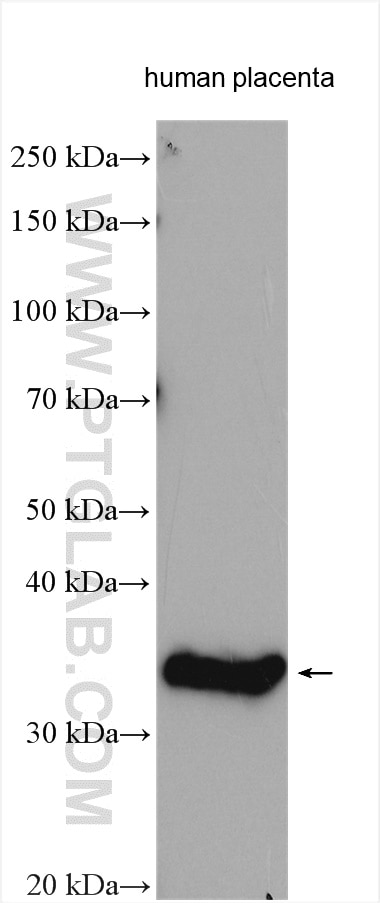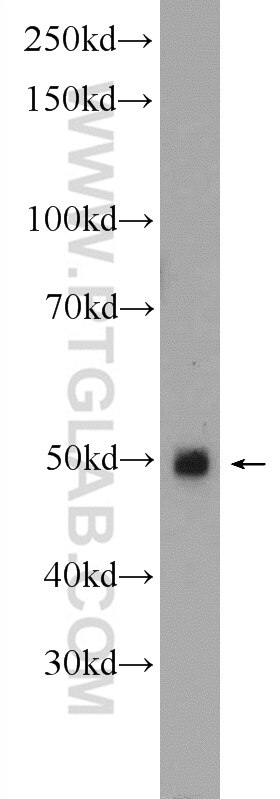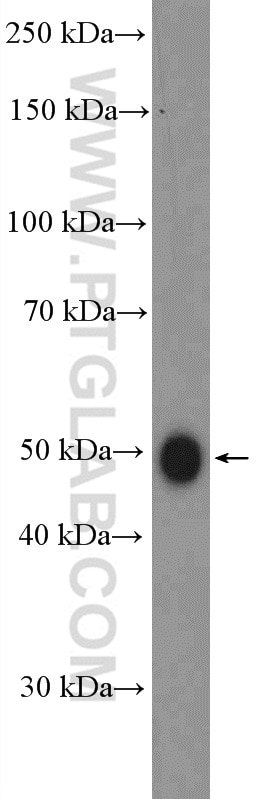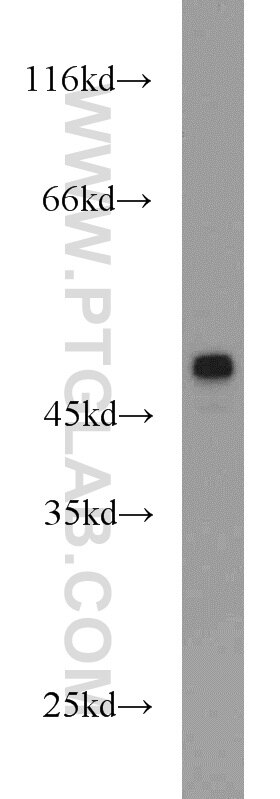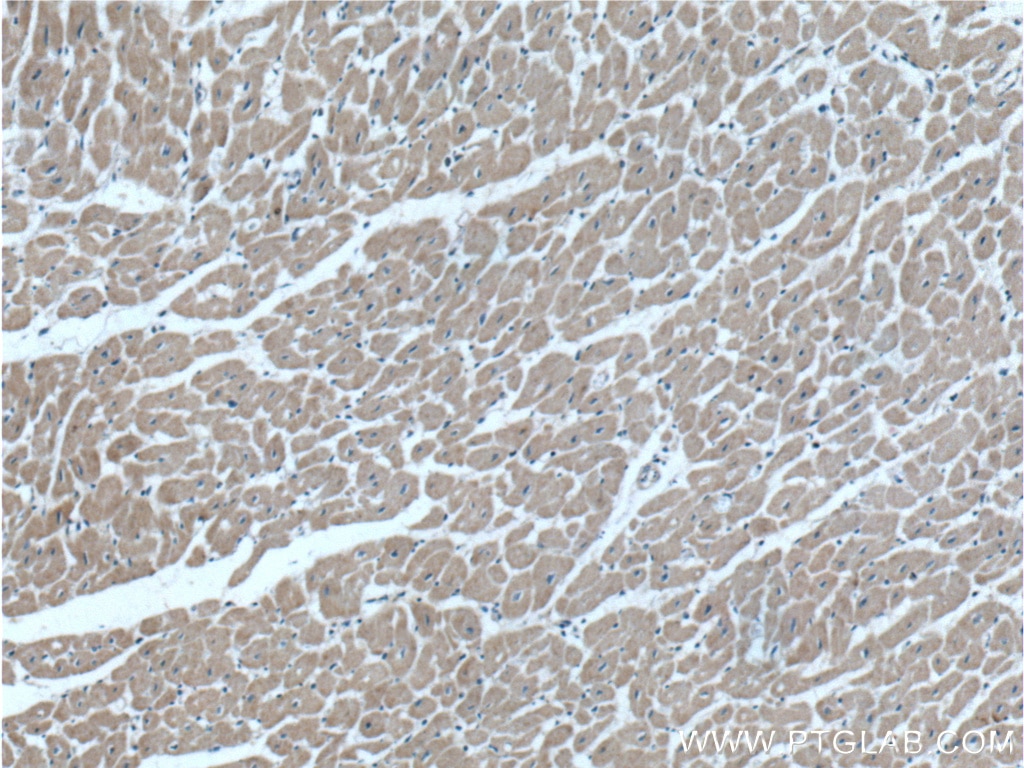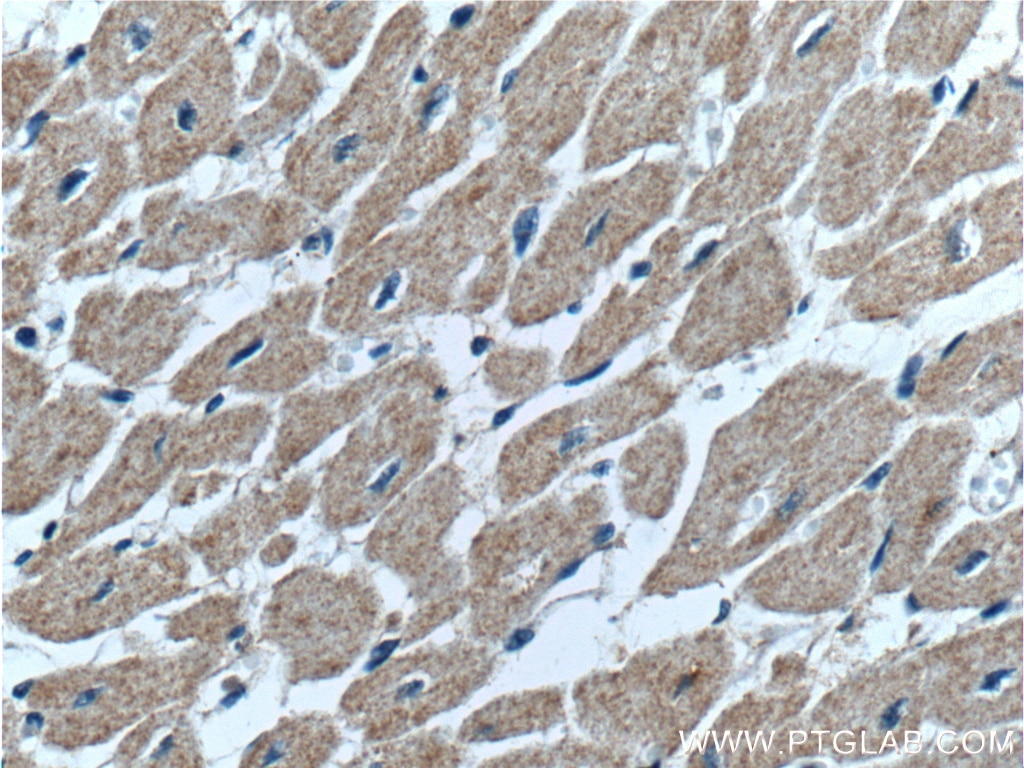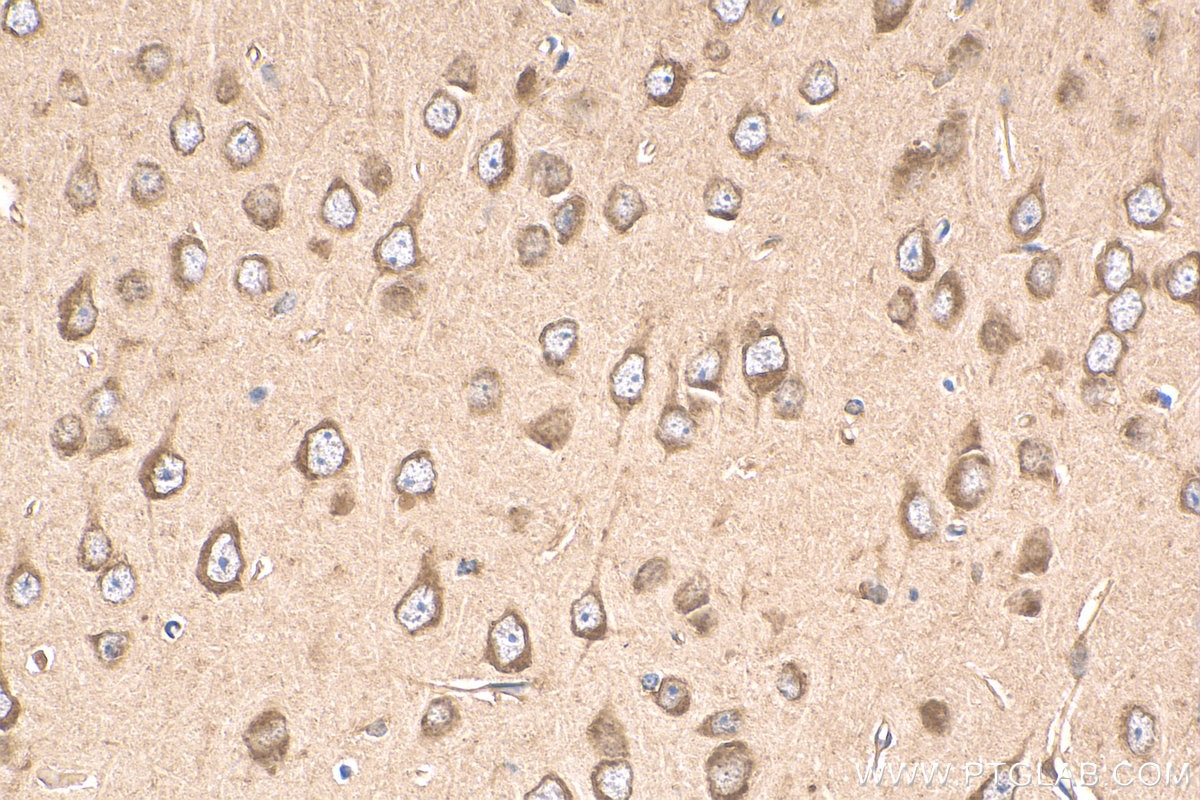- Phare
- Validé par KD/KO
Anticorps Polyclonal de lapin anti-GDF8/Myostatin
GDF8/Myostatin Polyclonal Antibody for WB, IHC, ELISA
Hôte / Isotype
Lapin / IgG
Réactivité testée
Humain, souris et plus (4)
Applications
WB, IHC, IF, ELISA
Conjugaison
Non conjugué
N° de cat : 19142-1-AP
Synonymes
Galerie de données de validation
Applications testées
| Résultats positifs en WB | tissu placentaire humain, cellules PC-3, tissu cardiaque de souris, tissu hépatique de souris |
| Résultats positifs en IHC | tissu cardiaque humain, tissu cérébral de souris il est suggéré de démasquer l'antigène avec un tampon de TE buffer pH 9.0; (*) À défaut, 'le démasquage de l'antigène peut être 'effectué avec un tampon citrate pH 6,0. |
Dilution recommandée
| Application | Dilution |
|---|---|
| Western Blot (WB) | WB : 1:500-1:2000 |
| Immunohistochimie (IHC) | IHC : 1:50-1:500 |
| It is recommended that this reagent should be titrated in each testing system to obtain optimal results. | |
| Sample-dependent, check data in validation data gallery | |
Applications publiées
| KD/KO | See 3 publications below |
| WB | See 35 publications below |
| IHC | See 7 publications below |
| IF | See 4 publications below |
Informations sur le produit
19142-1-AP cible GDF8/Myostatin dans les applications de WB, IHC, IF, ELISA et montre une réactivité avec des échantillons Humain, souris
| Réactivité | Humain, souris |
| Réactivité citée | rat, bovin, Humain, poisson-zèbre, porc, souris |
| Hôte / Isotype | Lapin / IgG |
| Clonalité | Polyclonal |
| Type | Anticorps |
| Immunogène | GDF8/Myostatin Protéine recombinante Ag13605 |
| Nom complet | myostatin |
| Masse moléculaire calculée | 375 aa, 43 kDa |
| Poids moléculaire observé | 50 and 35 kDa |
| Numéro d’acquisition GenBank | BC074757 |
| Symbole du gène | MSTN |
| Identification du gène (NCBI) | 2660 |
| Conjugaison | Non conjugué |
| Forme | Liquide |
| Méthode de purification | Purification par affinité contre l'antigène |
| Tampon de stockage | PBS with 0.02% sodium azide and 50% glycerol |
| Conditions de stockage | Stocker à -20°C. Stable pendant un an après l'expédition. L'aliquotage n'est pas nécessaire pour le stockage à -20oC Les 20ul contiennent 0,1% de BSA. |
Informations générales
Myostatin, also known as GDF-8, is a member of the TGF-beta superfamily. Myostatin is expressed in the myotome and developing skeletal muscles. Myostatin negatively regulates skeletal muscle growth and development through the regulation of anabolic and catabolic pathways in skeletal muscles. Myostatin immunoreactive bands could be identified at ∼50, 32-35, and 16 kDa, which correspond to the precursor, glycosylated dimmer, and monomer, respectively (PMID: 17711997). GDF8 may have cross-reactions with GDF11.
Protocole
| Product Specific Protocols | |
|---|---|
| WB protocol for GDF8/Myostatin antibody 19142-1-AP | Download protocol |
| IHC protocol for GDF8/Myostatin antibody 19142-1-AP | Download protocol |
| Standard Protocols | |
|---|---|
| Click here to view our Standard Protocols |
Publications
| Species | Application | Title |
|---|---|---|
J Cachexia Sarcopenia Muscle Potential therapeutic interventions for chronic kidney disease-associated sarcopenia via indoxyl sulfate-induced mitochondrial dysfunction. | ||
Cell Death Dis Endurance exercise remodels skeletal muscle by suppressing Ythdf1-mediated myostatin expression | ||
Br J Pharmacol A new therapeutic effect of fenofibrate in Duchenne muscular dystrophy: The promotion of myostatin degradation. | ||
Br J Pharmacol Inhibition of heat shock protein (HSP) 90 reverses signal transducer and activator of transcription (STAT) 3-mediated muscle wasting in cancer cachexia mice. | ||
Int J Mol Sci Renal Ischemia/Reperfusion Early Induces Myostatin and PCSK9 Expression in Rat Kidneys and HK-2 Cells.
| ||
iScience Phosphate depletion in insulin-insensitive skeletal muscle drives AMPD activation and sarcopenia in chronic kidney disease |
